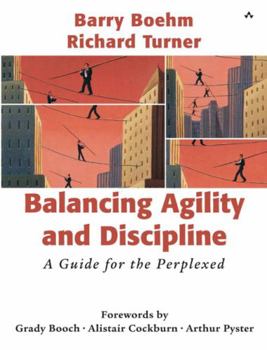Balancing Agility and Discipline: A Guide for the Perplexed
Nowadays, there are many methodologies you can introduce your to students. On the one hand, there are the more agile methods that focus on individual projects, and how to get them done fast--the camp represented by Beck and Cockburn. On the other hand, there are the more disciplined methods, focused on setting up organizational processes for getting projects done with predictable high quality--the camp best represented by the SEI, the CMMI, and Humphrey. Although these methods are often presented as mutually exclusive, they actually lie on a continuum. The authors of Balancing Agility and Discipline have worked out clear guidelines for determining where on that continuum a particular software development project is located--and therefore, how agile or disciplined a chosen methodology can or has to be.





